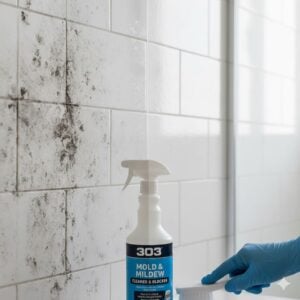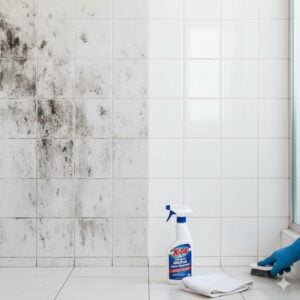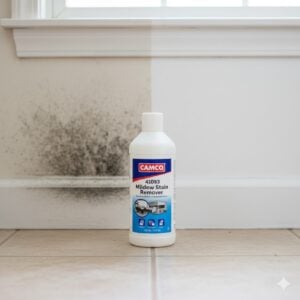The word mildew in Spanish is most commonly translated as moho. This term refers to a type of fungus that appears as a thin, often powdery or fuzzy growth on damp surfaces, organic materials, or poorly ventilated areas. Mildew can affect buildings, fabrics, food, and plants, and its presence usually signals excess moisture or poor air circulation. Understanding what mildew is, how it differs from mold, and how to manage it is essential, especially in humid environments such as coastal regions or homes with limited ventilation.
Table of Contents
ToggleMeaning of Mildew (Moho)
In Spanish, moho is used broadly to describe both mildew and mold, though technically mildew refers to a specific type of fungus that tends to be lighter in color—usually white, gray, or yellow—and grows flat on surfaces. Mold, on the other hand, can appear darker, greenish, or black and penetrates deeper into materials. However, in everyday usage, most Spanish speakers don’t differentiate much between the two. Both are seen as unwanted growths that damage surfaces and pose health risks.
Linguistically, the word moho originates from Latin mucor, meaning “slime” or “mold.” It’s used in many Spanish-speaking countries to describe organic decay or a musty smell associated with dampness. In Spain and Latin America, people might say “La pared tiene moho” (The wall has mildew) or “Hay moho en la ropa” (There’s mildew on the clothes) to indicate fungal growth caused by humidity.
Scientific Explanation
Mildew is a type of fungus that thrives in warm, moist environments. It belongs to the kingdom Fungi, which includes thousands of species that reproduce through spores. These spores float in the air and settle on damp surfaces, where they begin to grow. Common types of mildew include powdery mildew (which affects plants) and downy mildew (which grows on organic or porous surfaces).
Mildew requires four main conditions to develop:
- Moisture or high humidity
- Moderate warmth (20–30°C)
- Organic matter or porous material as food
- Poor air circulation or ventilation
Once these conditions are met, mildew grows quickly, releasing spores that can spread to other areas. This is why homes in humid climates often face recurring mildew problems in bathrooms, basements, and kitchens.
Common Places Mildew Appears
Mildew, or moho, can appear almost anywhere, but it tends to favor areas where moisture accumulates. Common places include:
- Walls and ceilings: Especially in bathrooms or rooms without adequate ventilation.
- Windows and corners: Condensation can lead to mildew growth in shaded or cold areas.
- Clothes and fabrics: Stored items in damp wardrobes or laundry left wet too long.
- Leather goods: Shoes, bags, or jackets kept in humid environments.
- Food: Bread, cheese, and fruit left too long in warm or moist conditions.
Appearance and Odor
Mildew usually appears as a flat, powdery patch that can be white, gray, or light yellow. Over time, it can darken as it matures. Its smell is distinctive—musty, earthy, and stale. In Spanish, people often describe the odor as olor a humedad (smell of dampness) or simply olor a moho (mildew smell). This odor is produced by microbial volatile organic compounds (MVOCs), gases released as the fungus digests organic material.
Difference Between Mildew and Mold (Moho vs Hongo)
While moho and hongo (fungus) are sometimes used interchangeably, mildew has its own characteristics:
| Feature | Mildew (Moho) | Mold (Hongo/Moho oscuro) |
|---|---|---|
| Color | White, gray, or yellow | Green, black, or dark brown |
| Texture | Powdery, flat, or soft | Fuzzy, slimy, and thick |
| Growth | Surface-level | Penetrates deeper into materials |
| Health effects | Usually mild irritation or odor | Can cause allergies or respiratory issues |
In Spanish-speaking countries, mildew is often grouped under the umbrella term moho, but the above distinctions are recognized in professional cleaning and health contexts.
Health Risks of Mildew
Mildew may seem harmless, but its spores can affect indoor air quality and trigger allergic reactions. Sensitive individuals might experience sneezing, nasal congestion, itchy eyes, or skin irritation. Prolonged exposure can worsen asthma symptoms or cause chronic sinus infections.
In Spanish, doctors refer to this as alergia al moho (mold allergy). Children, the elderly, and those with compromised immune systems are most vulnerable. Regular cleaning and ventilation are vital preventive measures.
How to Remove Mildew (Cómo eliminar el moho)
Eliminating mildew involves both cleaning and prevention. Simply wiping it off doesn’t stop regrowth because spores remain in the air or embedded in porous materials. Here’s how to do it safely:
- Ventilate the area by opening windows and doors.
- Wear gloves and a mask to avoid inhaling spores.
- Use a solution of white vinegar or diluted bleach (1 part bleach to 10 parts water).
- Scrub gently with a soft brush or sponge.
- Dry the area completely using fans or dehumidifiers.
For fabrics, soak them in warm water with a bit of vinegar or laundry sanitizer before washing. Avoid leaving wet items piled up — in Spanish, “No dejes la ropa húmeda acumulada.”
Professional Mildew Removal Services
In many parts of Spain, Mexico, and Latin America, professional cleaning companies offer servicios de eliminación de moho (mildew removal services). In the UAE and other humid regions, companies like Bio-On UAE specialize in both mold and mildew remediation using advanced steam extraction and anti-fungal treatments. Professional service is essential when mildew spreads over large areas, walls, or air-conditioning systems.
These services typically include inspection, humidity measurement, cleaning with non-toxic agents, and air purification. The cost varies depending on surface size and contamination level, but in Dubai, mildew removal starts at around AED 20–40 per square meter for surface cleaning and AED 1000 for advanced analysis or air testing.
Prevention Tips (Prevención del moho)
- Keep humidity below 60% using dehumidifiers or AC.
- Fix leaks promptly in roofs, pipes, and walls.
- Clean air vents and filters regularly.
- Use exhaust fans when cooking or showering.
- Store clothes and fabrics in dry areas with airflow.
- Open windows daily to improve ventilation.
In Spanish: “Mantén tu casa seca y ventilada para evitar el moho.” (Keep your home dry and ventilated to prevent mildew.)
Mildew on Different Surfaces
Mildew affects surfaces differently based on their material:
- On walls: Clean with a diluted bleach solution and repaint with anti-fungal paint.
- On tiles: Use vinegar or specialized mildew removers; focus on grout lines.
- On fabric: Use oxygen-based cleaners instead of chlorine bleach to avoid damage.
- On wood: Use mild soap and avoid soaking — dry immediately after cleaning.
- On leather: Wipe gently with alcohol-diluted water, then condition afterward.
Cultural and Linguistic Use
In Spanish-speaking culture, “moho” is also used metaphorically to describe things that are old, stale, or neglected. For example, “Esa casa está llena de moho y recuerdos” (That house is full of mildew and memories) can symbolize decay or nostalgia. Similarly, “ideas con moho” refers to outdated thoughts. This poetic usage shows how deeply the concept of mildew connects to deterioration and time.
Environmental Impact
Mildew plays a role in nature by breaking down organic material, recycling nutrients back into the soil. However, indoors, it’s destructive. Its spores can spread through ventilation systems, settle on food, and damage wood or paint. Because mildew thrives in humidity, climate change and rising moisture levels increase its occurrence worldwide. In tropical and coastal countries, it’s a constant maintenance challenge.
Conclusion
To summarize, mildew in Spanish is moho—a surface fungus that thrives in moisture and poor ventilation. While small spots can be cleaned with vinegar or mild disinfectants, persistent mildew requires professional treatment to prevent regrowth and protect indoor health. Understanding its causes, appearance, and prevention techniques can help you maintain cleaner, healthier living spaces. Whether you’re in Madrid, Mexico City, or Dubai, remember: controlling humidity and airflow is the key to keeping el moho away.













